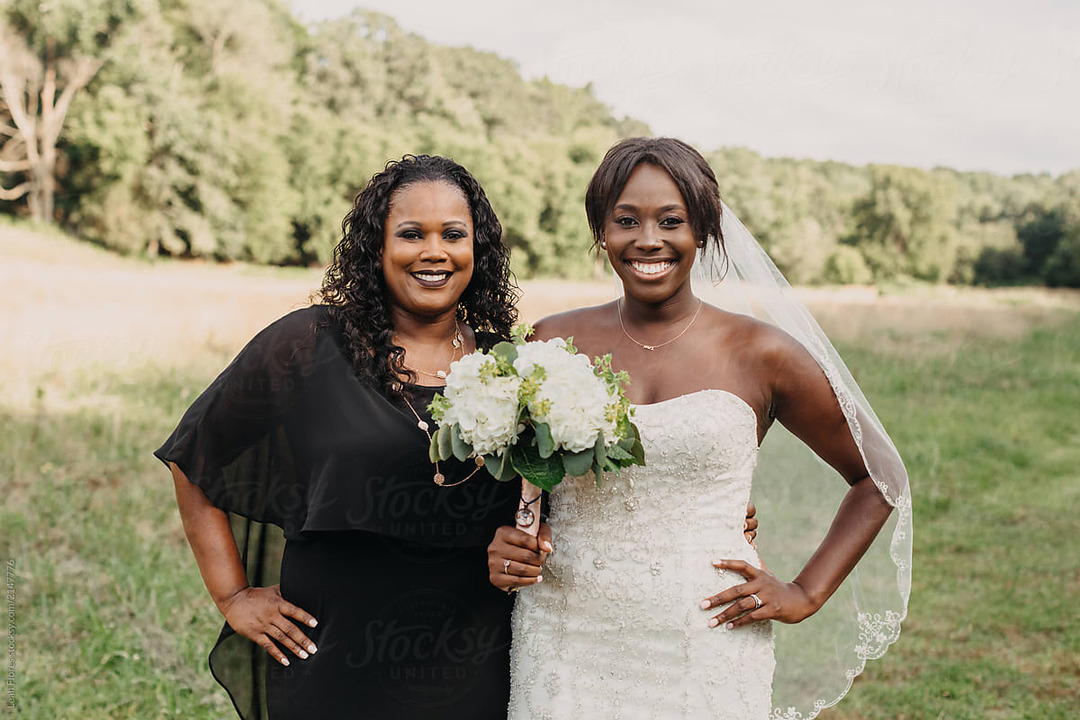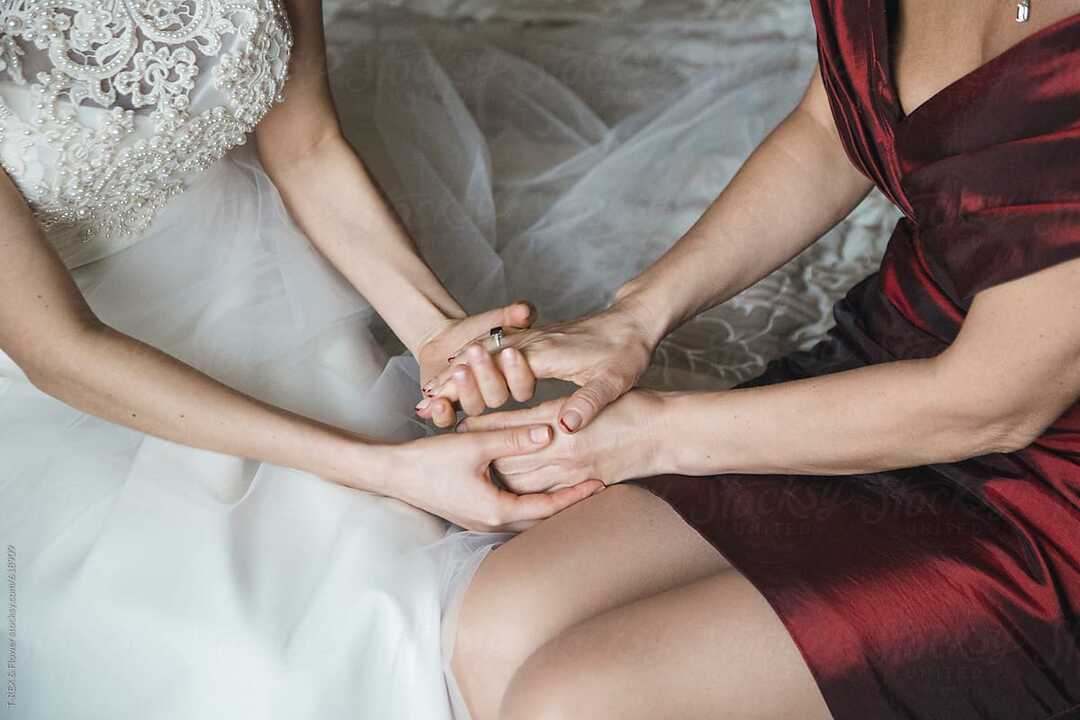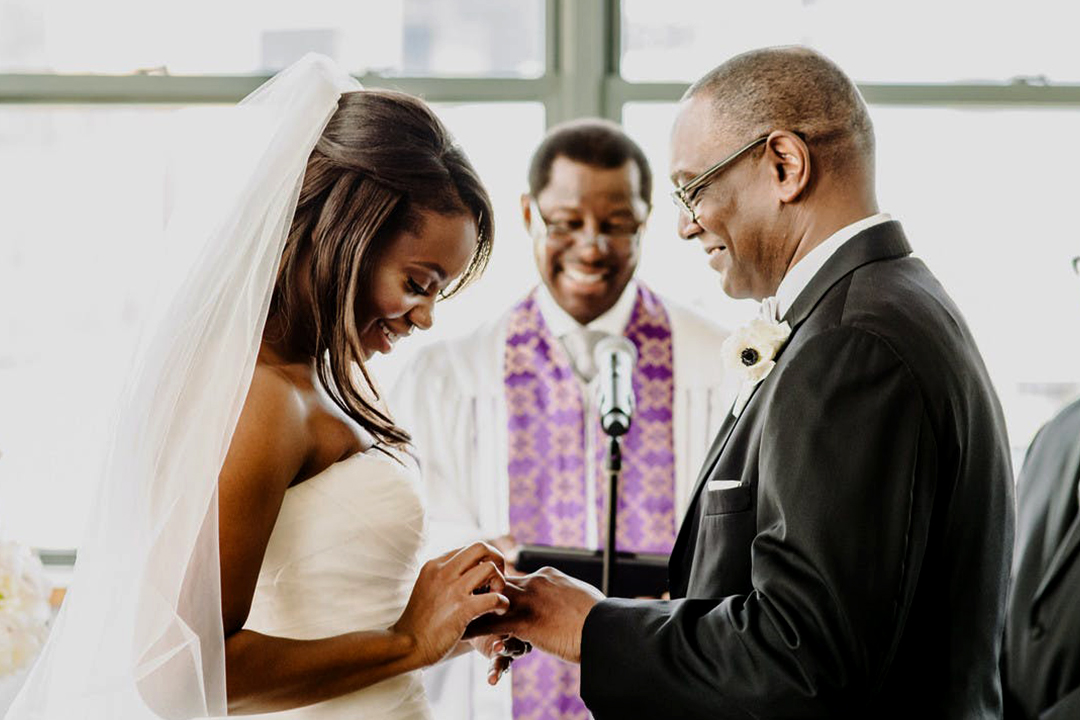- Expert advice/
- Wedding planning 101/
- Wedding planning questions/
- Who Walks the Mother of the Bride Down the Aisle?
- Wedding planning questions
Who Walks the Mother of the Bride Down the Aisle?
Find out who should walk the mother of the bride down the aisle with resources for planning your wedding processional.
Last updated February 5, 2024

During most traditional western wedding ceremonies, the father of the bride walks his daughter down the aisle, which begs the question, who walks with the mother of the bride?
Though she could probably find the way to her seat on her own, being escorted is a part of the wedding procession across a variety of cultures. If you’d like to stick with this tradition on your wedding day, several people would make acceptable escorts for the mother of the bride.
Traditionally, a groomsman should walk the mother of the bride down the aisle. However, as with most details of a modern ceremony, the couple getting married is free to make any adjustments or choices they would like when wedding planning. Other than a groomsman, many couples choose to have the mother of the bride’s son, grandson, brother, the father of the bride, or even the bride herself escort her down the aisle. So, if none of these options suit your style, or perhaps your unique family dynamics, do whatever works best for you.

Who Should Walk the Mother of the Bride Down the Aisle?
According to tradition, the arrival of the bride’s mother at the wedding ceremony is significant. So, naturally, her entrance is meant to have a bit of pomp and circumstance. Picking the right escort for your mother of the bride may seem like a mystery right now, but fear not. We’ve rounded up some of our favorite escort ideas for both traditional and modern couples.
A Groomsman
The most traditional choice is for a groomsman to walk the bride’s mother down the aisle. This can be an especially good choice if the two sides of the wedding party are uneven or if you’d like to give this gentleman some additional spotlight. Usually, the bride's mother is the last relative to be seated before the wedding party’s entrance, but more on that below.
Her son, Grandson, or Son-in-Law
The mother of the bride’s son or a grandson also makes an excellent escort choice. Even if the young man isn’t an adult—a willing teenager, pre-teen, or even a well-behaved youngster will make her trip down the aisle more adorable and comfortable. Similarly, a son-in-law could walk the bride's mother to her seat, giving him a small role in the ceremony.
Her Brother
The bride’s uncle, the mother of the bride’s brother, typically participates in the ceremony as no more than an usher. So, having him walk his sister down the aisle is a sweet, albeit small, gesture for someone who may not otherwise be a part of the wedding procession.
The Father of the Bride
While he will be busy escorting the bride herself down the aisle, he likely has enough time to pull double duty. This would require him to first walk the bride's mother to her seat and then hurry back to perform his main walk with the bride. The downside? This arrangement robs the father and daughter of a few precious moments together before the big moment when the bride begins her walk. As such, it should be discussed with the bride before any final decisions are made.
The Bride
In traditional Jewish wedding ceremonies, the mother and father of the bride walk their daughter down the aisle together. It’s a lovely tradition that many outside the Jewish faith have begun to borrow—particularly if the bride’s mother and father are divorced.

The Wedding Processional
While the bride’s walk down the aisle is the highlight of most wedding ceremonies, the question of who walks the mother of the bride down the aisle highlights the importance of presenting other prominent guests as well as the wedding party. The wedding processional order can be somewhat confusing, so it’s crucial to have an understanding of who walks when to keep your wedding march running smoothly.What Is a Wedding Processional?
The wedding processional refers to the collective group of individuals that will walk down the aisle at a wedding ceremony. Traditionally, this includes the officiant, the wedding party, parents of the couple getting married, flower girls, ring bearers, and the bride and groom themselves. Here is the traditional order of a Christian wedding processional.Grandparents: This step in the processional is optional, with some couples choosing to have their grandparents seated earlier. Depending on the groom’s and bride’s grandparents' age, asking them to walk down the aisle or stand waiting for an extended period may not be feasible.
The Groom’s Parents: Kicking things off, the groom’s parents will make their way down the aisle and take their seats. Once again, this part of the processional is optional. Some couples choose to either omit the groom’s parents from the processional order or have them make the entrance once it seems as though most other guests have been seated. Depending on the bride and groom's circumstances and desires, this may also include any step-parents to the groom.
Mother of the Bride: The bride's mother is traditionally the last person to arrive and be seated at the ceremony, and her entrance signals the beginning of the ceremony. If the bride has any step-parents she would like to have included in the procession, they will enter before the mother of the bride.
The Officiant: If the couple chooses to have the officiant walk in their processional, they will enter now. However, many modern couples have the officiant enter on their own at the altar's side and wait for them to arrive.
The Groom: Once the mother of the bride takes her seat and the officiant is at the altar, the groom will enter, typically from the side of the altar. However, some couples have the groom escorted down the aisle by his parents when they make their entrance.
The Best Man: The best man has two options to enter the ceremony. He will either come from the side of the venue like the groom or be the final groomsmen to walk down the aisle. Once at the altar, he takes his place by the groom’s side.
The Groomsmen: The rest of the groomsmen will walk down the aisle one-by-one, officially signaling the beginning of the wedding party processional.
The Bridesmaids: Next, the bridesmaids will proceed down the aisle one-by-one. However, some couples choose to have the groomsmen escort the bridal party, in which case all would enter accordingly.
The Maid or Matron of Honor: Before heading down the aisle, the maid or matron of honor will assist the bride with her veil, gown, and train to make sure she looks perfect and presentable. Thus, she is the last to walk down the aisle. If in pairs, the maid or matron of honor is escorted by the best man. She will take her place closest to where the bride will stand to assist her throughout the ceremony, such as holding her bridal bouquet.
The Ring Bearer(s) and Flower Girl(s): Immediately preceding the bride, the ring bearer(s) and flower girl(s) walk down the aisle. The ring bearer will traditionally carry a small pillow with the rings tied to it (or decoys, depending on his age) while the flower girl will carry a basket of petals to shower the aisle for the bride. Whether you’d like the ring bearer(s) to walk first followed by the flower girl(s) or have them walk together is up to you. Once they reach the top of the aisle, and the rings have been handed to the best man, their work is done, and they can be seated with their parents.
The Father of the Bride and the Bride: Of course, the processional ends with the bride’s father walking the bride down the aisle. Arriving at the altar, he will traditionally “give her away” to the groom, lift her veil, and kiss her to signify his blessing. Then he takes his seat next to the mother of the bride.
While this is the traditional Christian wedding processional, a couple can make any adjustments they would like to best suit their style, family, culture, or other differences. For example, a traditional Jewish wedding ceremony varies slightly with the Rabbi and Cantor opening the processional, followed by the grandparents, the groomsmen, the best man, the groom and his parents, the bridesmaids, the maid or matron of honor, ring bearer(s) and flower girl(s), and finally the bride and her parents.
The only thing that’s clear when it comes to deciding who walks the mother of the bride down the aisle is that it’s entirely up to each couple on their wedding day. While there are certain traditions you can lean on, your wedding is your own. Don’t be afraid to make changes that better suit your needs or style.
Up next for you

10 Tips on How to Walk Down the Aisle
How-To
Learn how to walk down the aisle with confidence on your wedding day. Practice these tips and to shake wedding nerves and look incredible in your photos.

A Guide to Wedding Ceremony Programs
Inspiration
Wedding ceremony programs communicate valuable information to your guests about your ceremony service—find out all you need to know to choose, word, and personalize your wedding programs.

Wedding Ceremony Order & Outline
Inspiration
Craft a seamless wedding ceremony with our guide to the perfect order. From vows to procession, plan every moment for a meaningful celebration.

Do You Need a Day-Of Wedding Coordinator?
Advice
In short, yes. However, aAsk yourself these questions to determine whether or not you need to hire a wedding coordinator day of, and you won’t regret it.
- Expert advice/
- Wedding planning 101/
- Wedding planning questions/
- Who Walks the Mother of the Bride Down the Aisle?
Find even more wedding ideas, inspo, tips, and tricks
We’ve got wedding planning advice on everything from save the dates to wedding cakes.
